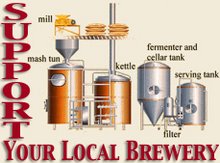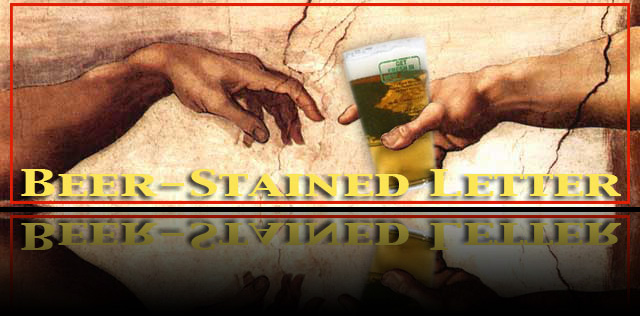Two guys walk into a liquor store ...
 It's one of those well-stocked discounters you typically find along a Jersey divided highway like Route 1 or 73, or say just off Route 287, like in Boonton or somewhere.
It's one of those well-stocked discounters you typically find along a Jersey divided highway like Route 1 or 73, or say just off Route 287, like in Boonton or somewhere.
The two guys are in their mid-20s. They plant themselves in front of the cold box for a few minutes, eying the various craft brews on the shelves, mulling a selection. They touch a sixpack, stop, then reach for another.
They plainly can't make up their minds. Too much to choose from. Life is good in a world of plenty.
This actually happened, Friday in Southern Ocean County, a place in New Jersey that's not exactly at the fore of the craft beer renaissance. Yet the selection is healthy, well beyond Guinness and Sam Adams.
But the point is, similar scenarios play out over and over these days at liquor stores where the staff is seasoned in the new world order of beer: Southern Tier, Southampton, Founders, Climax, Cricket Hill, Brooklyn, Dogfish Head, Victory, Troegs, Sly Fox, Otter Creek and Wolaver's, Rogues, Terrapin, Flying Fish, Ramstein, River Horse, Lost Abbey, Bear Republic, Ommegang, Yards ...
So, when the Brewers Association put out mid-year figures this week that said dollar sales for craft brewed beer jumped 12 percent in the first half of 2010, compared to 9 percent growth during that same period last year, and that the volume of craft brewed beer sold grew 9 percent from January through June of this year, compared to 5 percent growth in the first half of 2009, well, that was cause to celebrate.
And honestly, it's a moment to stop and think of those two 20-somethings who hovered over craft beer section at the liquor store, trying to make up their minds in that world of plenty (and 10-dollar sixpacks).
As a generation, a demographic, they have enjoyed a tremendously wide selection of brews since the day they could legally drink beer. As such they're the ones helping to power the uptick in sales, eschewing brand loyalty, their parents' beer, and following curiosity amid the vast sea of choice. (OK, so it's also said that in a down economy, people drink more. That figures into things, too.)
Anyone who took up homebrewing back in the early 1990s and kicked Bud, even Heineken, to the curb, remembers having to put up with explaining the new beer he was drinking to his old guard friends who reckoned beer was a straw-colored, everyman beverage that shouldn't be too fancy. (And god forbid that new brew had a settling of yeast in the bottom of the unopened bottle. That didn't translate at all.) Blame it on the fact that, for baby boomers, Bud, Miller and Coors were, by and large, the benchmarks for beer. Not homebrews, nor microbrews.
So, coming back to the original premise: The surge in craft beer sales and volume reflects a handing off of the baton to another generation of beer drinkers, a younger set that enjoys something its older brethen with need for flavor had to wait 20 years for.
Interest in better beer, variety ... It has become the rule, rather than the exception.
FOOTNOTE:
The U.S. now boasts 1,625 breweries — an increase of 100 additional breweries since July of 2009 — and the highest number in 100 years. A century ago in 1910, consolidation and the run-up to Prohibition had reduced the number of breweries to 1,498. (Source: Brewers Association)














1 comment:
If the same could happen to Music in my lifetime, I'd be a happy camper.
Thanks for the article, I now have hope.
Post a Comment